|
|
Post by 2lapsdown on Nov 9, 2012 8:49:34 GMT -5
I'm working on Gary's 33 winner. I've painted the front axle and steeering gear chrome. Since I have no color photos to go by I have a question. Was it common to chrome plate the springs on these early cars? I can't tell from the photos I've seen. Thanks
John
|
|
|
|
Post by jamesharvey on Nov 10, 2012 8:04:23 GMT -5
John,
Good question and hard to find an answer but I doubt that they were chrome. Most of the photos from that era show polished metal and some painting of these parts. Chrome would have been expensive. I have not been able to find a photo of the '33 winner that shows these parts. Karl Ludvigsen's "Indy Cars 1911-1939" and Dick Wallen's "Board Track Guts, Gold & Glory" show cars of that era which might help. You can find an occasional photo that shows chromed frame rails but the axles and springs seem to be polished. You might ask Walt Schaub (Old Photos on this site) if he has an answer. Good luck. I have the kit and will be building it soon so I will follow this conversation.
Jim
|
|
|
|
Post by 2lapsdown on Nov 10, 2012 8:41:50 GMT -5
I doubted they were chrome also for the reason you stated. I think I'll go with a nice silver color. Thanks for the response. Did you ever choose a body color?
John
PS Your Hoosiers gave my Buckeyes all they could handle on the football field and Coach Crean looks to be in great shape.
|
|
|
|
Post by Calvin on Nov 10, 2012 12:18:09 GMT -5
WIP?  |
|
|
|
Post by tomfaletti on Nov 10, 2012 12:45:00 GMT -5
Here is additional information on the Lou Meyer '33 winner.  Notice the caption says this car didn't have the brightwork that the the Boyle car did. The Mark Dees book "The Miller Dynasty" says there were four and possibly five of this chassis design built, i.e. rear drive with a De Dion suspension front and rear.  Note below that the car ran smaller front wheels than the rear during the race. 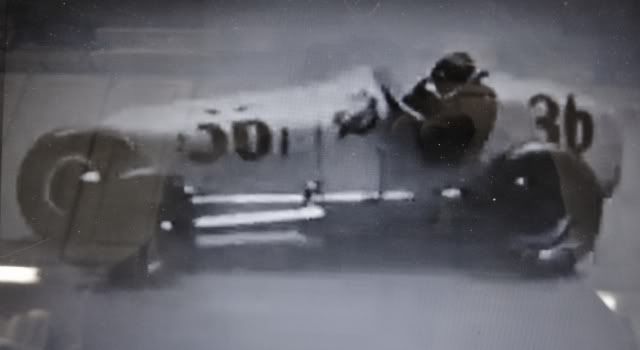 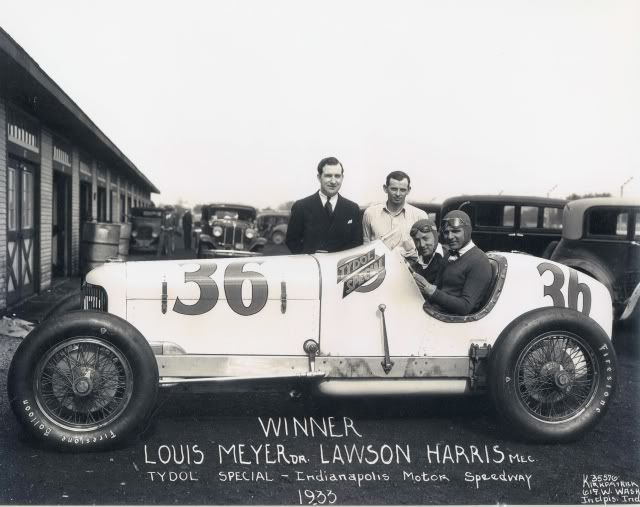 Also note below the rear springs mount to a solid tube connecting the rear hubs and not to the "drive shafts"  As far as colors, I have a strong suspicion that the car pretty closely matched the Tydol corporate colors. 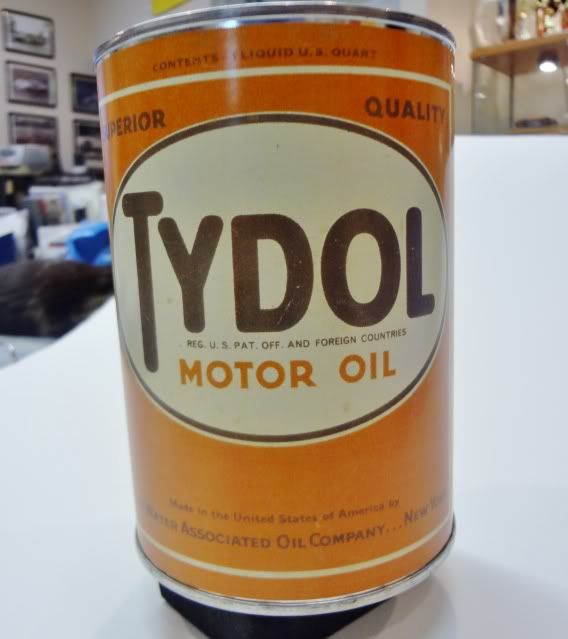 You can see in this pit road shot that the car is quite a bit darker than the white Chet Gardner car parked behind.  I think the body matches the cream color on the can and the numbers were more orange than red. Notice in the profile picture above that the contrast between the numbers and the body isn't that extreme.(my opinion) Below is a poster from the time. It's highly stylized, but it does show the car with orange numbers. 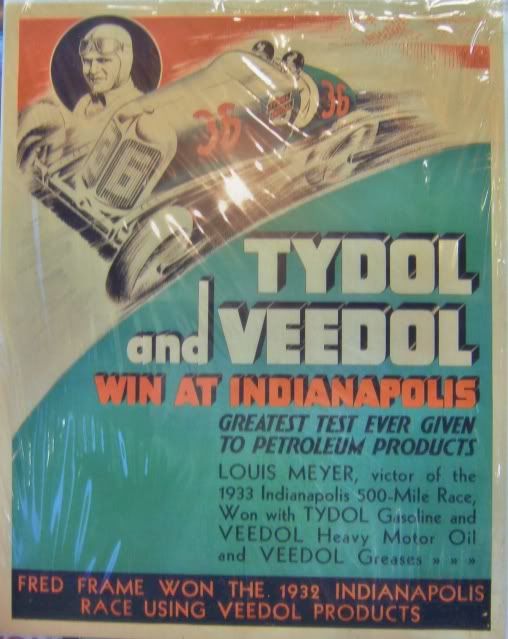 Here is the right side of the car in victory lane. Notice no number on the right side of the hood.  Again, the colors are my opinion. There may be others who have better information. The Jack Fox book says cream and red are the colors. If only someone from back in the day was still around we might be able to verify things. 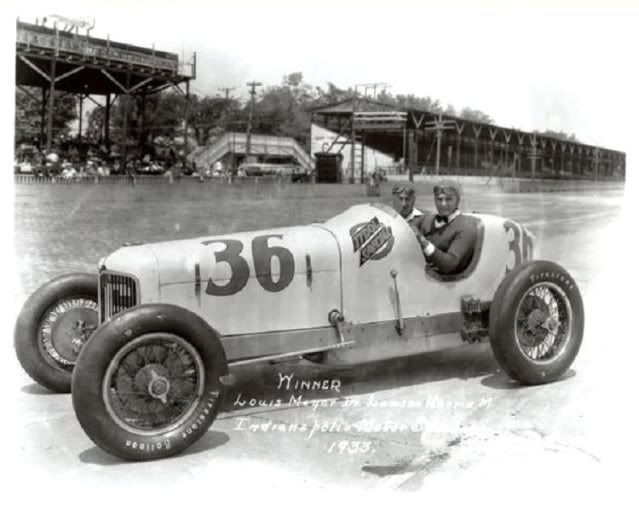 |
|
|
|
Post by indycals on Nov 10, 2012 15:22:47 GMT -5
An image search for Tydol brings up mostly red and black logos, but there are some orange/brown and even some red/black/green. More searching indicates that Flying A gasoline was brought to the market by Tydol in 1932 and all the Flying A logos I'm finding are red and black. But then the add shows orange numbers... so your guess is as good as mine  |
|
|
|
Post by indycals on Nov 10, 2012 15:26:31 GMT -5
Also, the words Tydol Special have a white outline around them, which I know the Cady sheet does not have, and the red circle is outlined in black. So yeah, expect some 1933 winner decals from me soon  |
|
|
|
Post by 2lapsdown on Nov 10, 2012 21:58:52 GMT -5
This is great stuff!! Thanks Tom and Michael. And Calvin, it's good to see you up to your old tactics again. I work too slow for WIPs and usually have at least two things going at once.
Thanks again to all of you.
John
|
|
|
|
Post by 2lapsdown on Nov 10, 2012 22:09:55 GMT -5
I just thought of something. I already have the wheels painted red and they're glued up and mounted. Also the interior is painted red. I guess I vote for red decals.
John
|
|
|
|
Post by tomfaletti on Nov 10, 2012 22:20:39 GMT -5
That's good news Michael. I look forward to the new decals. Maybe you could do them in both red and orange so we have a choice. : )
|
|
|
|
Post by jamesharvey on Nov 11, 2012 7:29:32 GMT -5
This is just remarkable. What a wealth of information and detail. Thanks so much for sharing. I look forward to the build. I also appreciated learning about some books I need to add to my collection.
Jim
|
|
|
|
Post by tomfaletti on Nov 11, 2012 11:47:34 GMT -5
Looking around the net a little more, I see that as Michael said, Associated Oill Company from San Francisco created Flying 'A' gasoline in 1932. But I see that Tide Water Oil Company (Tydol-Veedol) didn't merge with Associated Oil until 1938. Maybe that was the year that the Flying 'A" red was introduced to Tydol-Veedol. The images I found with logos similar in style to that on Louis Meyer's 1933 car show orange lettering. 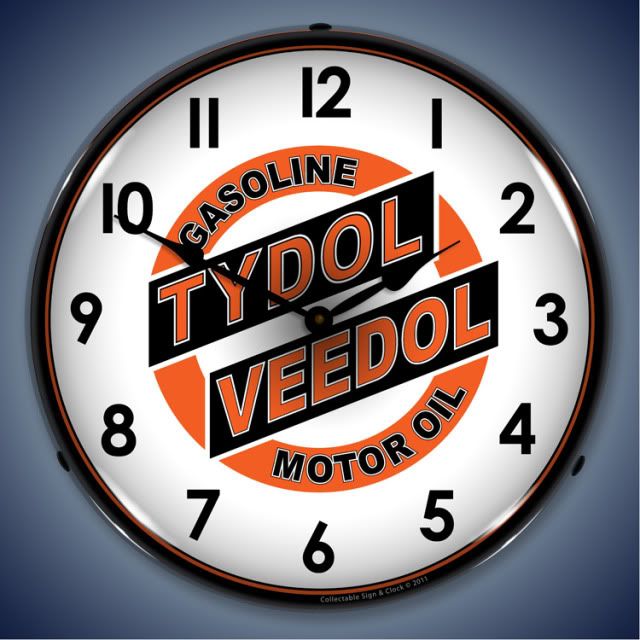 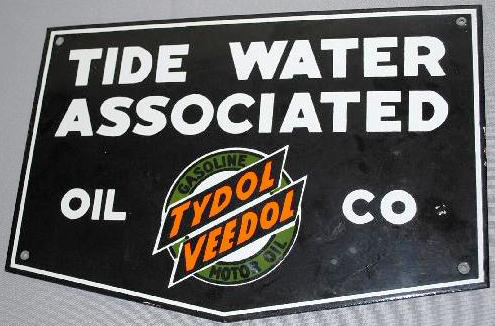 Nothing conclusive here, I'm just trying fit the puzzle pieces together.  And I have no idea regarding the green, although the dark color on the oil can is almost a dark olive green. Wish we could know for sure.... |
|
|
|
Post by Calvin on Nov 11, 2012 12:47:48 GMT -5
I work too slow for WIPs and usually have at least two things going at once. Thats OK  If you dont want to do a WIP I dare you to snap a picture of what you are doing.  |
|
|
|
Post by indycals on Nov 11, 2012 13:48:18 GMT -5
After more searching, I'm starting to think that orange and black is probably correct and that the red didn't start coming into use until the later 30s., although I've seen indications that orange was still used into the 50s too.
|
|
|
|
Post by indycals on Nov 11, 2012 14:10:21 GMT -5
Also interesting to note, in the qualifying photo, the car has Firestone Balloons on the front, and regular Firestones on the back.
The cream color for the body is probably correct. Apart from the evidence that Tom presented, if you look at the qualifying shot, compare Louis' white cuff - it is noticeably brighter than the body of the car.
|
|
|
|
Post by indycals on Nov 11, 2012 14:23:10 GMT -5
And to further muck things up - lets throw in the 1936 winner too - at least one person thinks it was orange instead of red:  |
|
|
|
Post by tomfaletti on Nov 11, 2012 17:58:14 GMT -5
Michael, I noticed that about the tires too. I'm thinking that during the mid 30's Firestone phased out the word "Balloon" but that the tires were interchangable. Some teams probably had unused tires from previous races. I doubt different tire compounds existed then. Here's a picture of Ted Horn's car (the 1932 winner) in a 1936 Firestone promo showing different tires on the front. 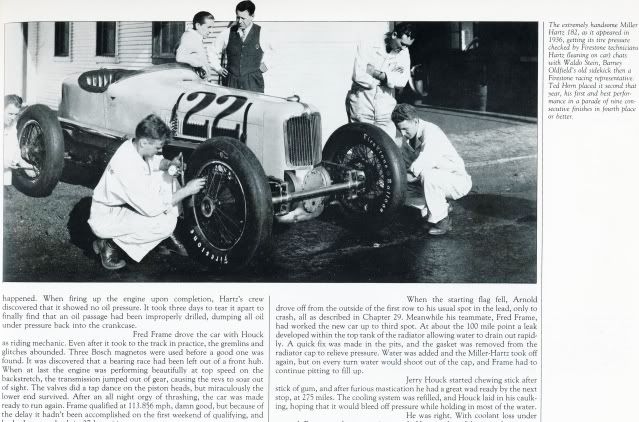 This car was still owned by Harry Hartz and was painted his signature gray with dark blue numbers. Horn finished second to Meyer in the '36 race. BTW, it appears that the front drive cars did not run the smaller front tires. |
|
|
|
Post by tomfaletti on Nov 11, 2012 18:20:39 GMT -5
As far as the color of the 1936 winning car, First Turn Production's DVD covering 1925-1941 races shows conclusively that Meyer's car was red and white. This is a color shot of the car being towed down the front stretch at some point before the race. 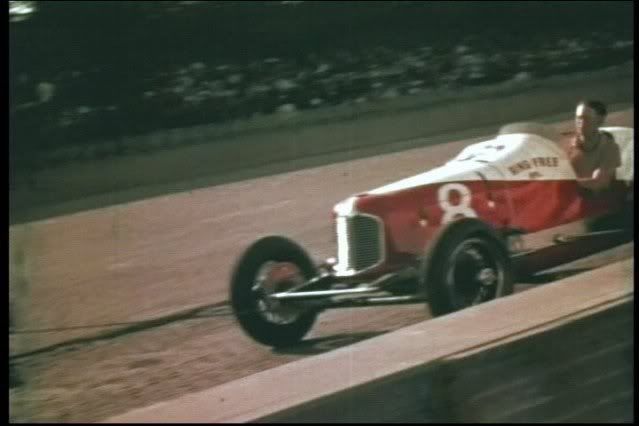 This a color shot of the car being prepped before qualifying. 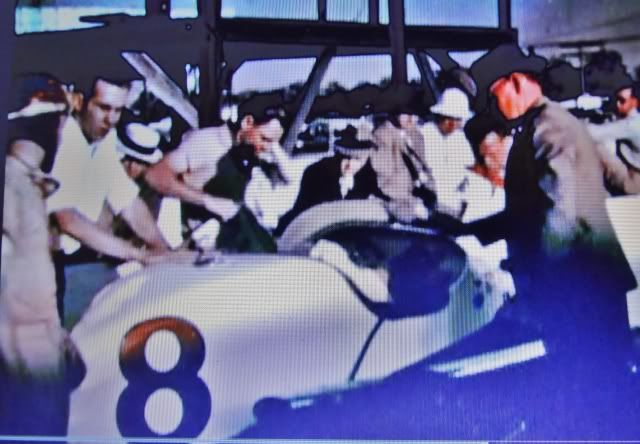 As you can see the wheels are black. I thought for the longest time that they were red. 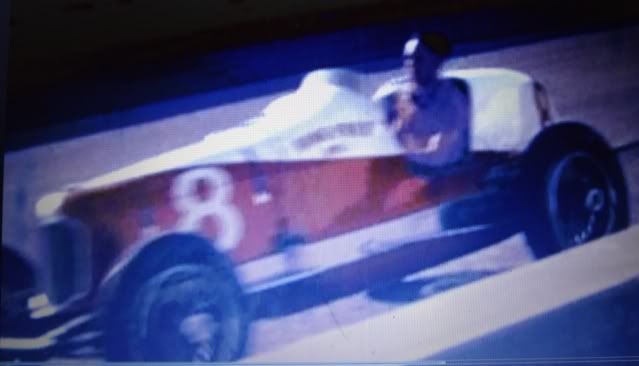 I also thought the upholstery was red. But now I feel about 95% certain that it was black too. |
|
|
|
Post by 2lapsdown on Nov 11, 2012 19:12:32 GMT -5
Great googly moogly, now I have a car with red wheels and interior and we're talking orange. I seem to have opened a can of worms. Or Pandora's box.
John
|
|
|
|
Post by tomfaletti on Nov 11, 2012 22:25:48 GMT -5
John,
I'm sorry about throwing a wrench in the works. I'm pretty sure I can explain the situation to Gary, and have him send you a new set of wheels. If he wants to charge for them, I will take care of it, given that I started this mess. I'll call him tomorrow.
At that point all you have to do is adjust the upholstery color and wait for Michael to release the new decals.
BTW, in general, many of these cars had a gun metal finish on the springs. The other components were usually polished aluminum or polished steel, but not always. Every car was different, I suppose largely a result of the owner's wishes.
Wish I could help more with this particular car. Again, the Mark Dees book said this car lacked brightwork.
I'd say the grilles, radiator shells and exhausts were the items most commonly chromed. Axles and steering and were also chromed at times.
Most of all, I don't mean to sound like an expert, because I definitely am not one!
Tom
|
|
|
|
Post by indycals on Nov 11, 2012 22:36:08 GMT -5
So if the scheme was orange and black, what color was the upholstery? I cannot fathom that it was orange.
|
|
|
|
Post by 2lapsdown on Nov 11, 2012 22:37:10 GMT -5
Tom, I'm really grateful for all the knowledge that's come from this post. You've only accomplished positive fedback with your input. I'm sure if I left everything red nobody I know that will see the car will know the difference. Although Michael's decals will be more accurate with regard to proper outlines on the lettering etc.
John
|
|
|
|
Post by tomfaletti on Nov 11, 2012 22:52:46 GMT -5
I'm thinking that the interior was a natural color. Like camel or light brown. something in that range. Perhaps similar to the Blue Crowns or the 1950 Parsons car. That is strictly a guess. I could be way off base.
But I agree Michael, I can't imagine it was orange.
Tom
|
|
|
|
Post by racerbrown on Nov 12, 2012 7:21:43 GMT -5
you've gotta love the first turn production dvd's as who would have thought we'd see color shots of these old races.
highly recommended!
duane
|
|
|
|
Post by 2lapsdown on Nov 12, 2012 8:08:09 GMT -5
I guess I should tell everyone that I chose my colors based on photos of the finished model. So it seems the model was finished based on an opinion rather than any factual information. Also Fred's decals must be based on opinion too. I'm still mulling over what to do. Again, I really appreciate all the input on this, it's what makes the forum a very special place.
John
|
|
|
|
Post by indycals on Nov 12, 2012 14:03:41 GMT -5
One of the fun things about trying to decipher colors from black and white film is that over the years, black and white film has interpreted colors differently over the years. One argument for the Marmon Wasp being orange instead of yellow is how dark it appears in photos. If it was yellow it should look bright in photographs. But that is not the case - photographic film of the era was sensitive to blues, not not so much for yellows. (Ray Harroun confirmed that the current color of the Wasp is correct). Here's an add from the 1930 touting the more natural look of Panochromatic film: photo.net/learn/optics/edscott/pss00030.htm |
|
|
|
Post by SWT500 on Nov 12, 2012 14:41:03 GMT -5
Look at the stills above and, as Michael pointed out, the colors are off there, which, IMO, leaves the jury out on whether the car is red or orange. Given the tones of the landscape and track, I tend to lean toward orange.
|
|
|
|
Post by gavkiwi on Nov 15, 2012 19:23:12 GMT -5
Has anyone seen this pic of the '33 winner ? Appears to be a model, clearly the Tydol logo, numbers and seat are red.  I'm not saying is 100% accurate, but it is interesting to note that someone took the time to paint it red. I've also been speaking to an acquaintance that specializes in colorizing b&w photos to color, and he also was leaning toward red for the numbers, logo and seat for the '33 winner. "It's a Miller chassis with a Miller inline 8 engine and a displacement of 258 CI... It was rear drive. From qualification pictures I have, there should be a very short windscreen in front of the driver only. The car should be white or cream, with red (though Tydol's colors appear at times to be more of an orangeish red) numbers and wheels. The cars sponsor, Tydol, was an oil and gasoline company." |
|
|
|
Post by indycals on Nov 15, 2012 20:39:17 GMT -5
I'm not saying is 100% accurate, but it is interesting to note that someone took the time to paint it red. Not surprising since the only known source (that I'm aware of) that describes the color of the car is the Jack Fox book which describes it as cream and red. Popely's book also describes it as such, but I believe he was using the Fox book as a reference. When I was developing my decals I tried both red and orange and one thing that is very striking is the lack of contrast with the black and red version compared to orange and black - the red and black is very difficult to read, whereas the orange and black is very easy to read. That tydol logo just does not work in red and black. In theory this lack of contrast should translate to black and white film - modern (ie, since at least the 60s) black and white film renders red fairly dark. The images of Meyer's cars show some pretty decent contrast in the logo. That said, film in the 30s was different from film in the 60s and 30s film may have been more sensitive to red, rendering it brighter - it's impossible to say without knowing what film was used. The reality is that we will never know unless some remarkably good color images show up, but they would have to have both red and orange in the photo as well as other identifiable subjects to insure color fidelity. For now, the only indicators we have are the Fox book, which has many inaccuracies and can't be trusted 100%, and historic Tydol advertisements that pretty much indicate orange. Attachments:
|
|